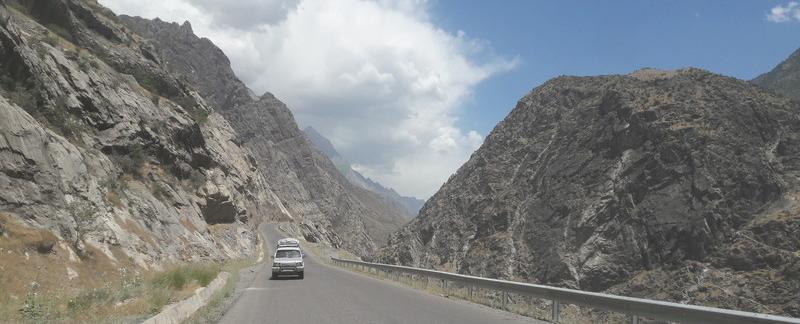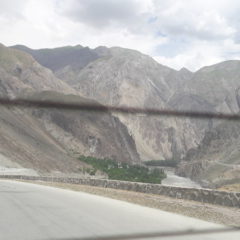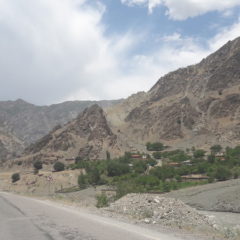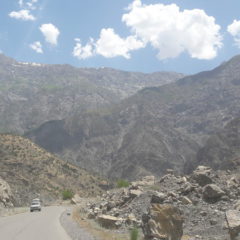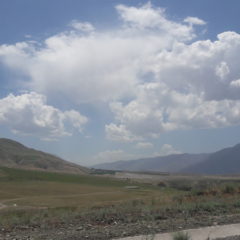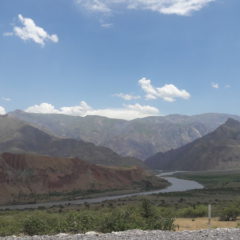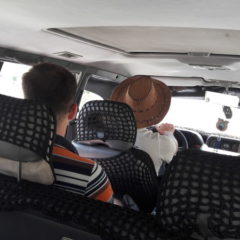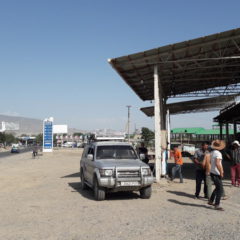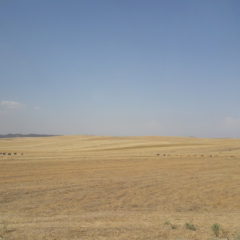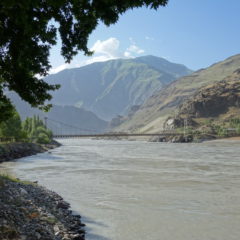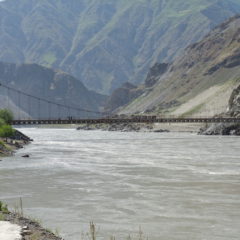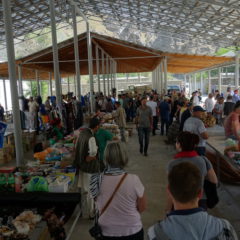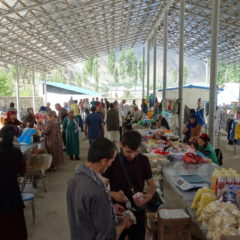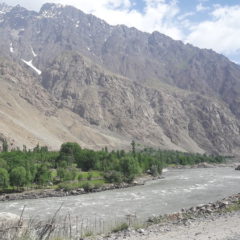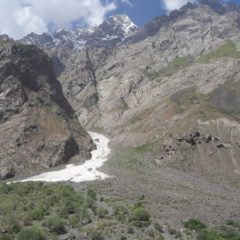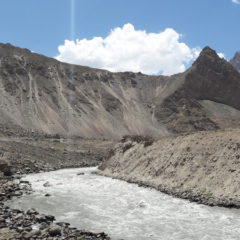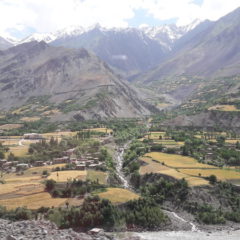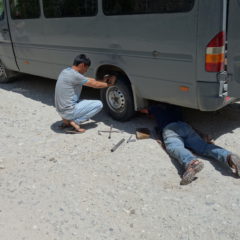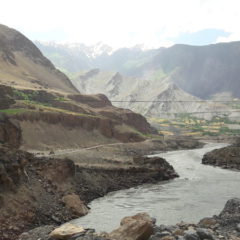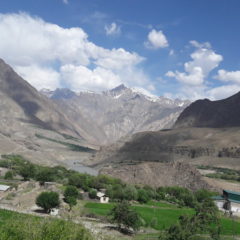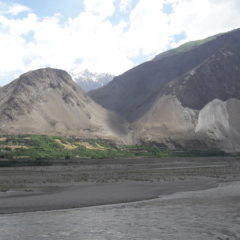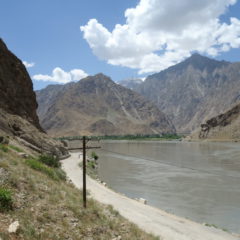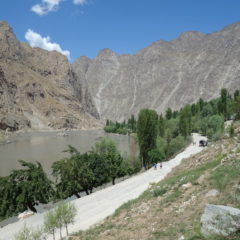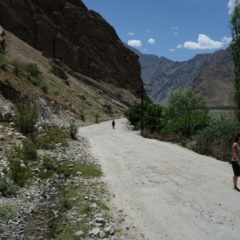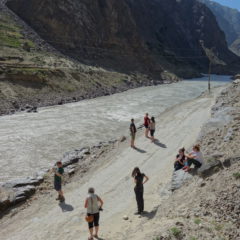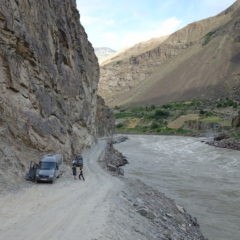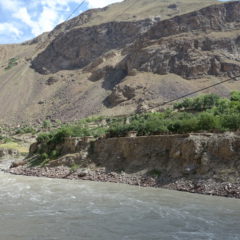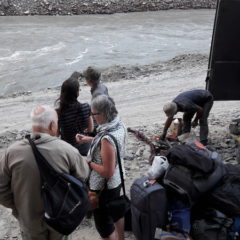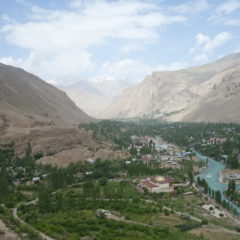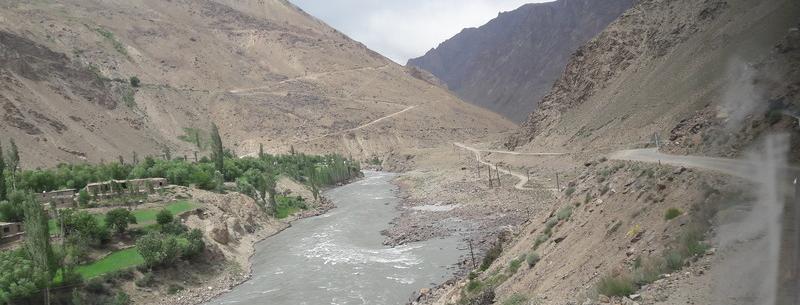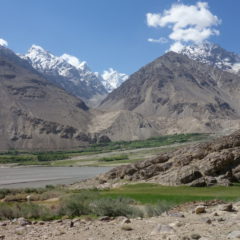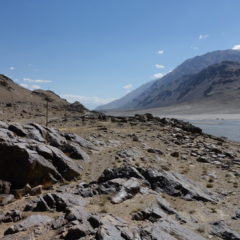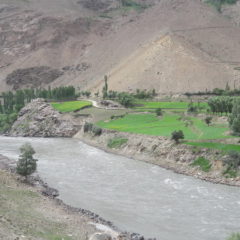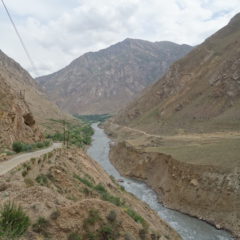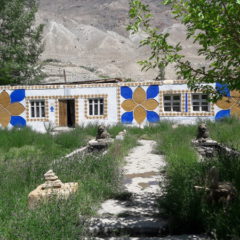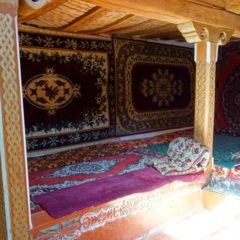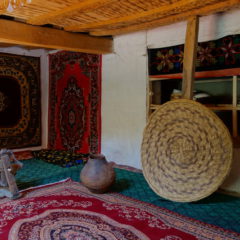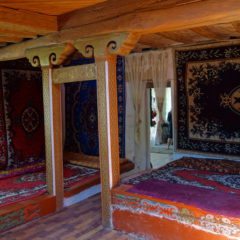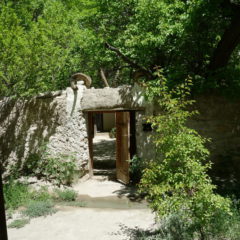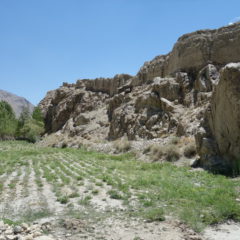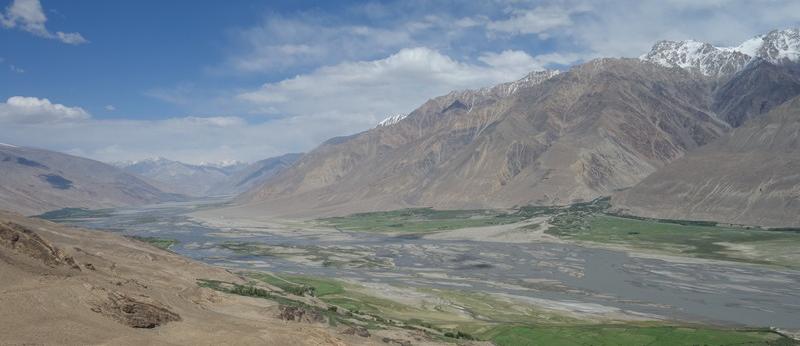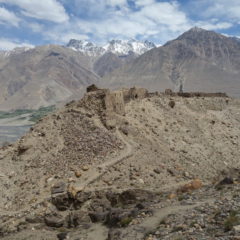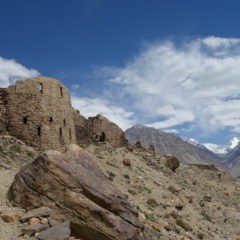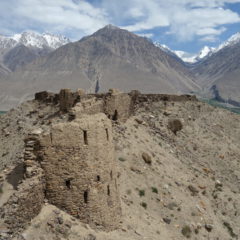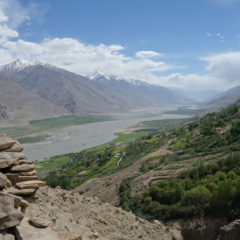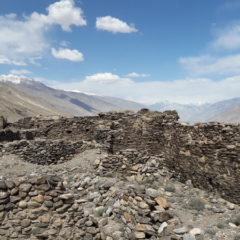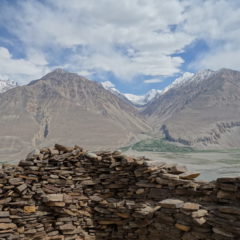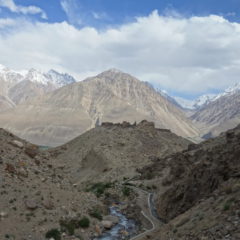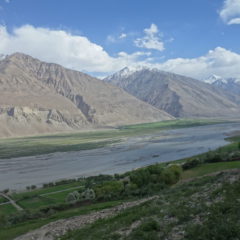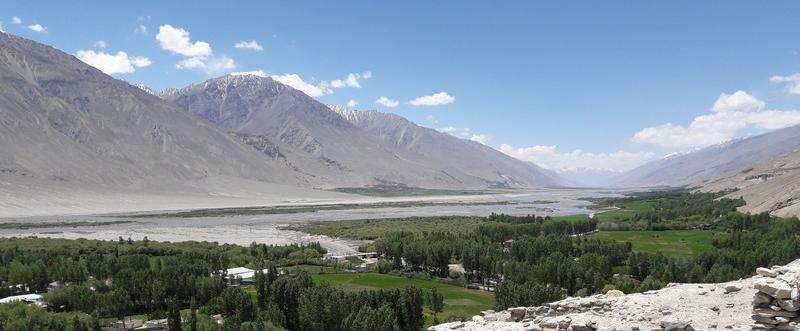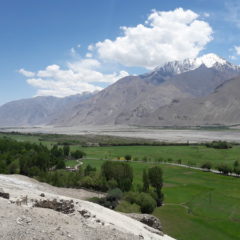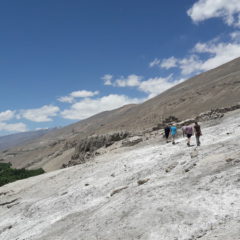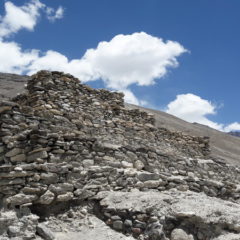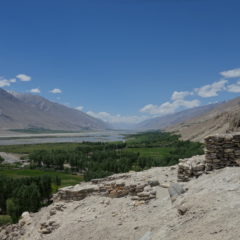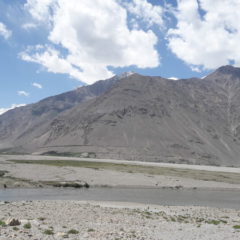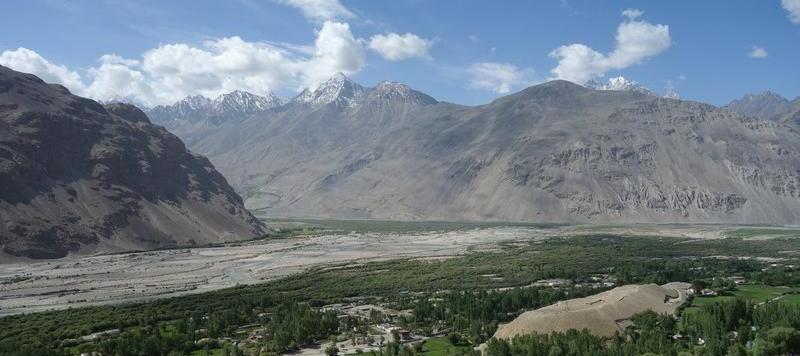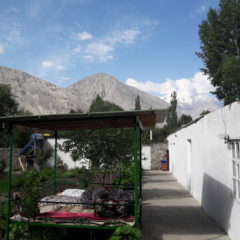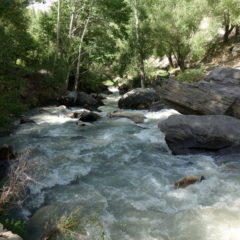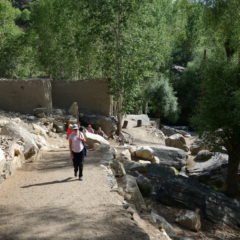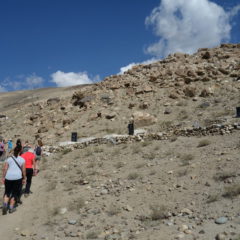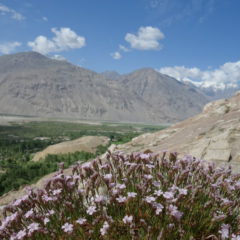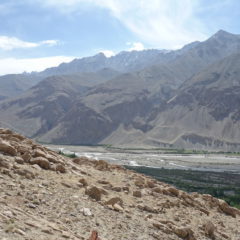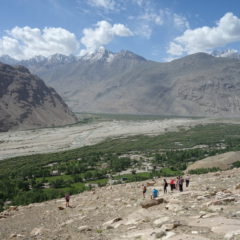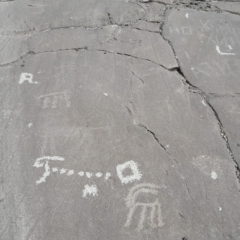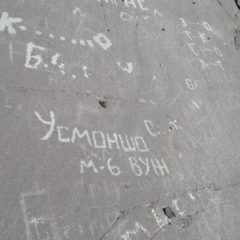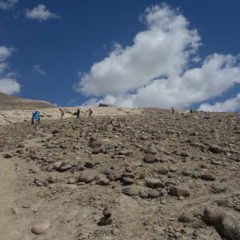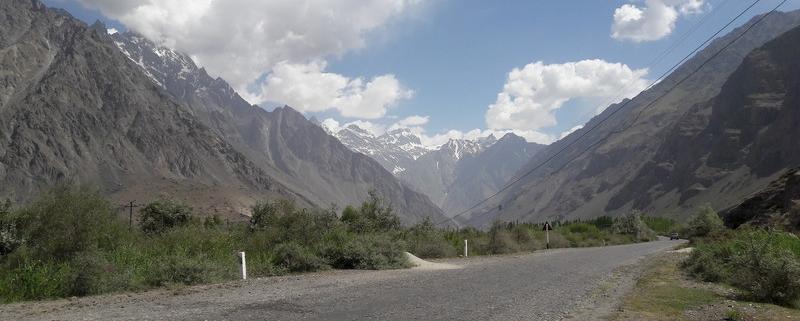 Today we had a stretch of about 240km ahead of – from Khorog to Rzvay – and today was also the day, that someone in the Intrepid (travel company for this trip) head office in Australia had gotten very nervous.
Today we had a stretch of about 240km ahead of – from Khorog to Rzvay – and today was also the day, that someone in the Intrepid (travel company for this trip) head office in Australia had gotten very nervous.
We left Khorog in the morning, made it back to the Panj river and were now heading in a Northern direction; we were now also back on the M41 road, i.e. the Pamir Highway.
We had numerous photo stops on the way – and also a first incident, when a tire had given up and had to be replaced. This surely was no big deal; one of our replacement tires was taken out of the van and from here it was a simple replacement job – and we were back ready to go within 15 minutes.
We had lunch in a nice little restaurant close to the river, the summary being: great food, but atrocious toilets.
We continued along M41 following the Panj river. About 5km after the village of Lyakhsh (at 38°19’28”N, 71°13’24”E) we were hit by bad luck: while going through a bump in the road the ball bearing of the drive shaft was hit and destroyed.
Sasha got the car of the road and went straight into trying to replace the ball bearing. And while he had an impressive collection of spare parts with us, the specific one – of course – was not included. Sasha tried to improvise, but after some hours it was clear, that this would not work … so Jam had to organize a plan B, to get us moving again. About five hours after the incident two jeeps were pulling in and we were soon on the move again – making our way to Rzvay in the dark.
You may now ask yourself, why someone in Australia may have become nervous – right? Well … very simple … the breakdown occurred literally 50 meters from the border to Afghanistan (with just a wild river between Afghanistan and us).
We were certainly a bit of an attraction for the people over in the village of Jamarj-e Bala on the Afghan side of the river – – despite the distance (maybe just below a hundred meters to the village) there was some good interaction here – including loads of waving.
